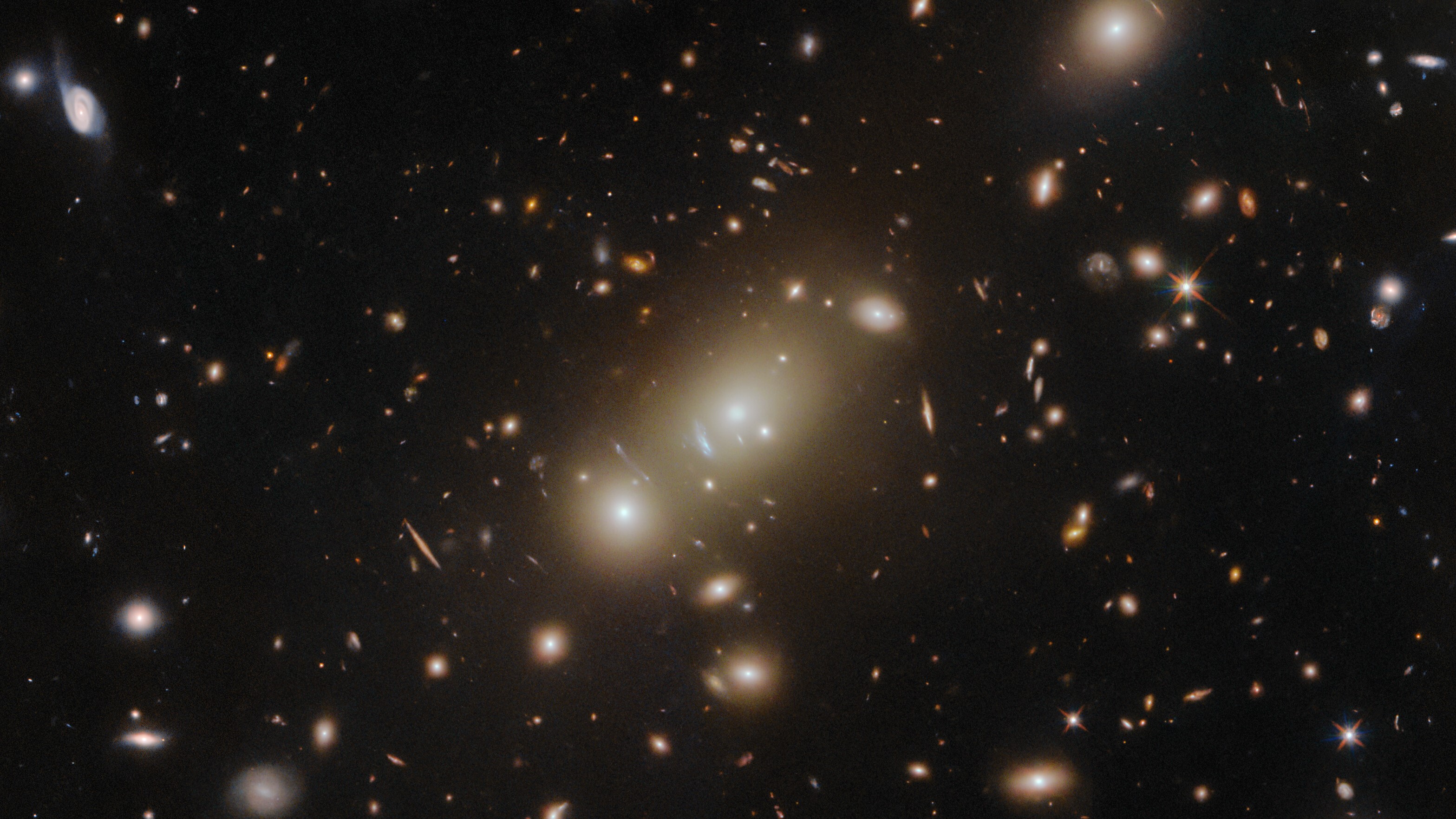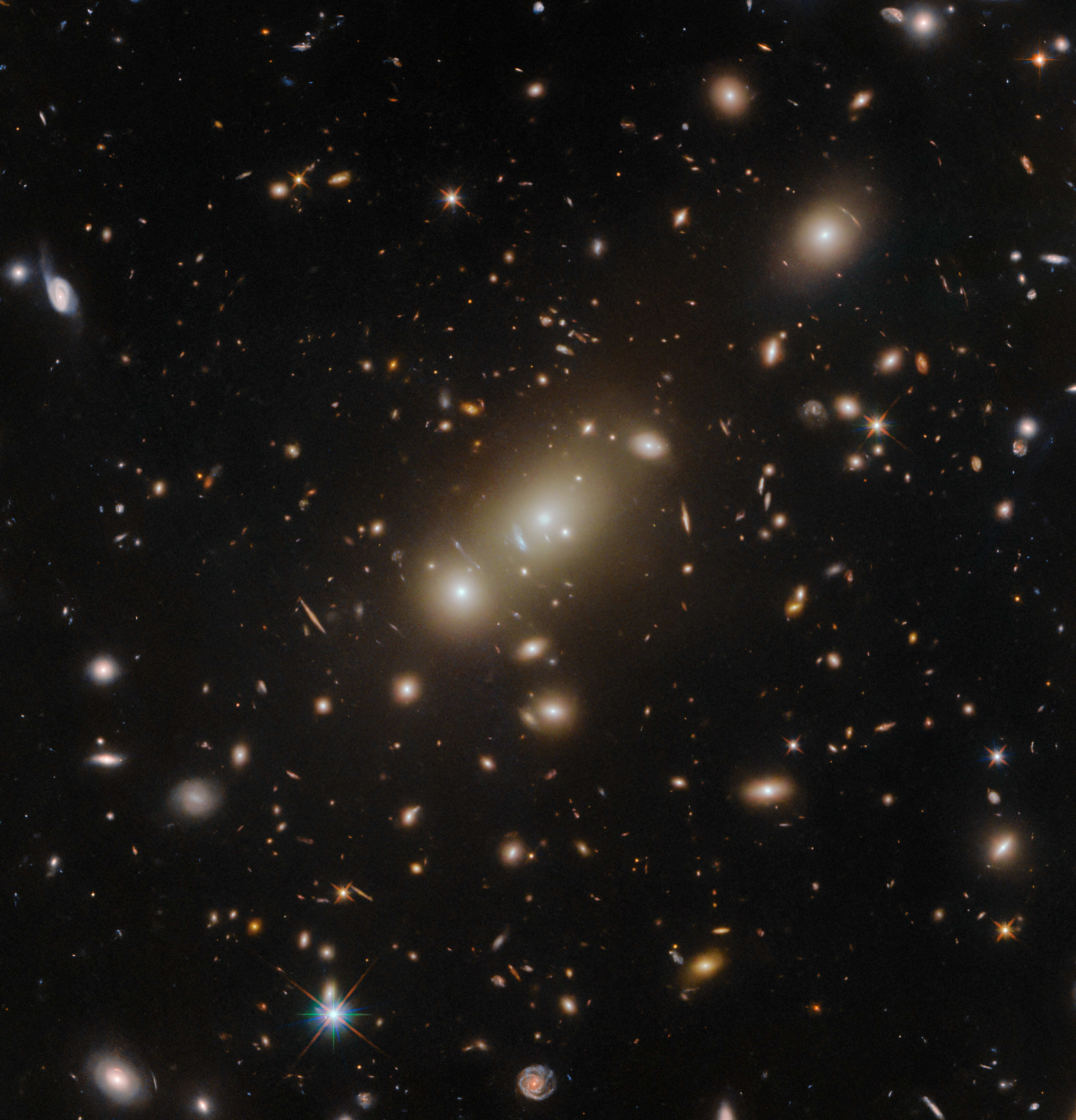Hubble images a museum of galaxies, and some are gravitationally warped (photo)
Someday, Abell 3322 could help us learn about the way dark matter permeates galactic clusters.

No matter how often the Hubble Space Telescope provides us with mind-numbing views of our universe, the excitement of seeing a new one always feels fresh. Such is the case for an image released by NASA on Friday (Aug. 18).
In this portrait, we're witnessing a massive galaxy cluster named Abell 3322, which is a menagerie of realms that collectively sit some 2.6 billion light-years from our planet. As one light-year equals the distance light travels in one year, even adjusting for the universe's expansion rate, this cluster therefore appears to us as though it were frozen in time during a different epoch of cosmic history.
Front and center in the image lies a hard-to-miss hazy galaxy dubbed – prepare for a mouthful – 2MASX J05101744-4519179.
Related: Neptune's clouds have vanished, and the sun may be to blame (video)
One of Abell 3322's important qualities for science observations, according to the release, is the fact it's so luminous at X-ray wavelengths, which refer to wavelengths of light on the electromagnetic spectrum that fall between 0.1 and 10 nanometers. X-ray light is invisible to human eyes, as our unaided vision can only see visible light wavelengths between 400 and 700 nanometers, but astronomy instruments can get past our physical limitations. However, the cluster is also observable in other light wavelengths, which NASA outlines.
According to a NASA statement on this cosmic cluster image, two of Hubble's devices came together to give us this stunning scene. The telescope's Wide Field Camera 3 captured the part of the electromagnetic spectrum that falls between ultraviolet, visible light and infrared light while its Advanced Camera for Surveys zeroed-in on visible-light observations in particular. You might've also heard the term infrared astronomy thrown around lately due to James Webb Space Telescope making headlines as it decodes our universe with specialized infrared sensors.
Detecting this type of light is key for scientists looking to study the most ancient regions of our universe and peek past thick veils of dust and gas to see what may lie behind. In fact, NASA says future observations of Abell 3322 with the JWST might prove useful in studying the cluster, which lies in the constellation Pictor.
Breaking space news, the latest updates on rocket launches, skywatching events and more!
Another pretty awesome detail about this recently released image is how many galaxies seem to look like someone went on Microsoft Word and widened them until they looked like weirdly formatted, dragged-out smudges. But these smudges are fascinating to glance at, because the reason they look the way they do is due to a phenomenon called gravitational lensing, once predicted by Albert Einstein's general relativity theory.
"Observing galaxy clusters like Abell 3322 can advance our understanding of the evolution and interactions of dark and luminous matter in galaxy clusters, and also reveals powerful gravitational 'telescopes' that magnify distant objects through gravitational lensing," NASA said in the statement.
In a nutshell, gravitational lensing refers to how light from a distant object (like a galaxy) gets affected as it travels through space that's been warped due to very heavy objects (like other galaxies) creating dents in the fabric of spacetime. Astronomers can harness this effect for scientific observations of faraway things in the universe because those light distortions can sometimes result in a magnifying effect known as gravitational lensing. This phenomenon makes sources of lights easier to parse from our vantage point on Earth.
Actually, the JWST has really been killing it in that regard, showing us tons of gravitationally warped galaxies that simply will blow your mind. Maybe, Abell 3322 will be next on its list.

Monisha Ravisetti is Space.com's Astronomy Editor. She covers black holes, star explosions, gravitational waves, exoplanet discoveries and other enigmas hidden across the fabric of space and time. Previously, she was a science writer at CNET, and before that, reported for The Academic Times. Prior to becoming a writer, she was an immunology researcher at Weill Cornell Medical Center in New York. She graduated from New York University in 2018 with a B.A. in philosophy, physics and chemistry. She spends too much time playing online chess. Her favorite planet is Earth.

